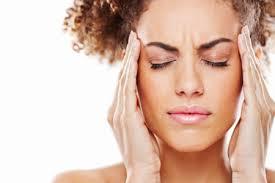 By Rachel Lombard
By Rachel Lombard
Research indicates that about 18% of women suffer from migraines, compared to only 6% of men, and the reason could lie in hormonal changes. Many women notice a relationship between their hormonal changes and their migraines. The trigger could be due to a drop in the level of estragon immediately before the start of one’s menstrual flow. Below are some tips for women on how to best prevent or treat their migraines.
Manage migraines during menstruation:
- Take a cold wet cloth or an ice pack surrounded by a dry cloth and place on forehead in the painful area
- Stay hydrated with plenty of water
- Try breathing and relaxation exercises which can lower stress and lessen the symptoms of a headache
- Take over the counter pain relievers such as ibuprofen starting two days before menses until the end of the flow
- See a doctor who can prescribe other medications that could help relieve symptoms such as Triptans
Manage migraines when on oral contraceptives:
Some women may experience an increase in migraines when they begin taking oral contraceptives. Oral contraceptives can have many different formulations with various estrogen and progesterone levels. If you have menstrual migraines and take oral contraceptives it may be best to talk to your doctor about options that could help relieve your migraines. Possible options to consider:
- Take a pill with less inactive placebo days
- Decrease the drop in estragon on inactive days by taking a pill with a lower dose of estragon
- Wear an estrogen patch or take estragon pills on inactive days
The exact correlation between hormone levels and migraines is still being explored, but it is important to identify signs and symptoms of migraines induced by hormonal changes.
Sources:
